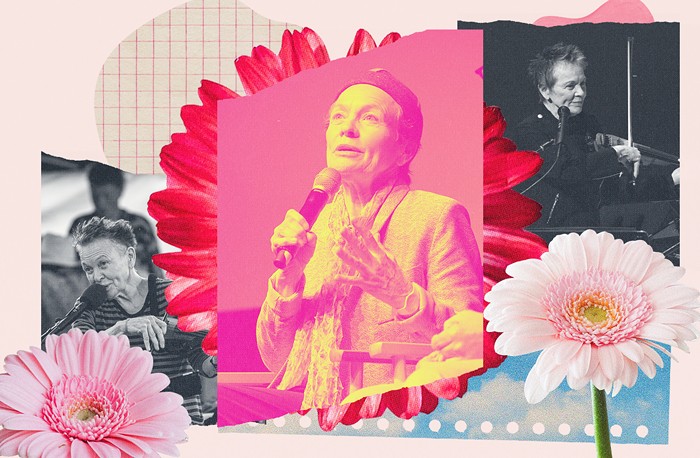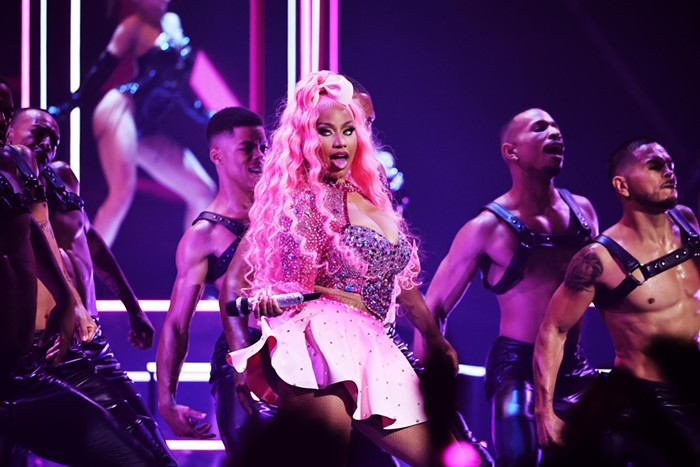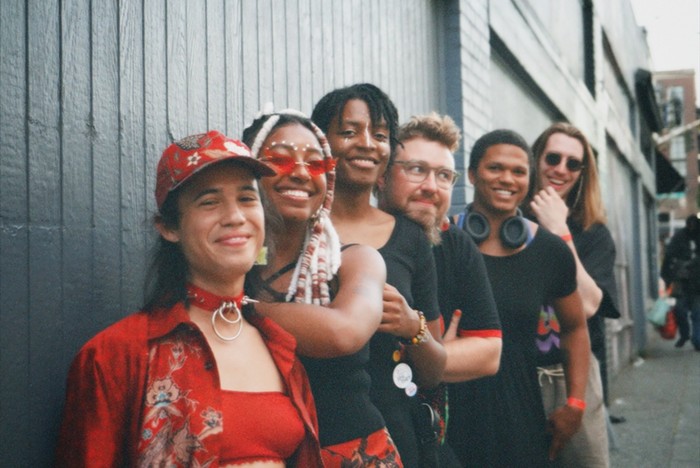We all know jazz is gone. There are no more historic club sessions. There are no more celebrity soloists. According to Newsday, jazz makes up only two percent of all record sales nationally. Two percent. That's nothing. That's probably less than klezmer, or Armenian reggae. The plastic for jazz CDs, the glossy paper for jazz magazines, the brick and steel of jazz clubs: It's all being repurposed for pop, folk, world, country, rock, and kid rock. It would be a sad day for the jazz faithful, if it weren't for the fact that jazz lives on, stronger than ever, within all those forms of music.
That kind of eternal afterlife is not satisfying enough for the self-appointed old guard of jazz, however. Historian Ken Burns, producer of the epic Civil War series on PBS, is going to give jazz the same stifling miniseries treatment on television this winter. Wynton Marsalis, for his part, lobbied hard and won a multimillion-dollar expansion of New York's Lincoln Center. There, he will continue to play Ellingtonian swing for a few hundred people at a time, reveling in the exactitude of his re-creation of 1940s popular music. But he will soon learn that he can't keep jazz in a box. It's dead already, and it will just begin to smell bad. Meanwhile, the true essence of jazz has long since escaped into the broader American landscape.
Jazz appears in the usage of flat fives and nines and natural sixes in music from Nashville to Sunset Boulevard. It appears as samples in hiphop: bebop for A Tribe Called Quest to cool their beats off with, Stan Getz for Queen Latifah to make her ballads more bittersweet. Even without being overtly mimicked or rebroadcast, jazz lives on in the spirit of improvisation. From the Cut Chemist's battle records to Bad Liver's banjo solos, jazz is omnipresent and omnipotent, a great force flowing through the musical universe.
If jazz is the Force, then guitarist Charlie Hunter is Luke Skywalker. He's young and hotheaded, but the force is strong with him. He battles on in the days after jazz's death as one of Blue Note's most successful artists, but he is not a jazz musician as we know it. He is just a somewhat regular guy who can channel that old jazz energy in remarkable ways.
Like young Skywalker, Hunter uses obscure, somewhat outdated technology as his weapon. In an age of production teams, canned beats, and synthesized orchestras, Hunter is a do-it-yourself type. His guitar has eight strings, and Hunter plays his own bass lines with the lower two strings while playing solos and melodies and comping chords on the rest of the strings. His favorite sound effect is an old-fashioned B-3 organ sound, and when he gets going, Hunter sounds like Jimmie Smith, or other great organists of the past, tying together separate thoughts and movements into one unshakable groove.
But all of these idiosyncrasies aren't just a vain attempt to play jazz with a different instrumentation. Rather, Hunter has always set his musical sights on the world outside of jazz. Instead of playing the jazz standard "All the Things You Are," Hunter had his first minor hit when he covered Nirvana's "Come as You Are" with his quartet in 1995. It was a remarkable rendition, with Hunter laying back and letting his jazz style wash all over the song, exploiting its melodic potential and elevating Cobain to the aesthetic level of a seasoned jazz composer. When Blue Note asked his quartet to put out a cover album for their series of cover releases, Hunter didn't reach back to Charlie Christian or Miles Davis. Rather, he went and found jazz in an unlikely source: nine songs from Bob Marley's Natty Dread album. As he had with Cobain, Hunter resurrected Bob Marley as a jazzhead, bringing out Latin, bossa nova, and even bop themes that were there in the music all along.
Hunter's own songwriting echoes that mission. With his laid-back virtuosity and his refusal to play jazz standards in jazz clubs for jazz faithful, Hunter's main work is bringing out the jazz in the world of music around him. He gives funk jams a blue tinge and makes the silence in between blues riffs tense and heavy. His talent will show that jazz is everywhere in the year 2000, stronger in death than it ever was in life.


















